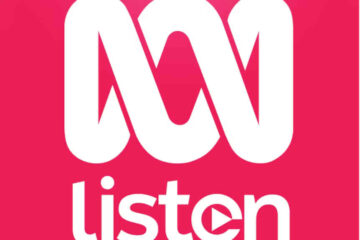Recent negotiations to establish a ceasefire between Israel and Hamas have gained heightened urgency as regional tensions escalate. With over 40,000 lives reportedly lost during the prolonged conflict, both sides face increasing pressure to reach an agreement.
On the Israeli side, defense chiefs are urging Prime Minister Benjamin Netanyahu to strike a deal. Meanwhile, reports indicate calls from families of hostages still held by Hamas, stressing this moment as their “last chance” to secure their loved ones’ release.
U.S. involvement remains palpable, with another aircraft carrier and missile-equipped submarine dispatched to the region. This strategic move follows threats from Iran and Hezbollah, who have warned of retaliation against Israel for the targeted killings of key leaders associated with Hamas and Hezbollah.
U.S. officials argue strongly for peace talks, seeing it as pivotal to easing regional tensions. Amos Hochstein, the U.S. envoy, stated the need for immediate action, noting, “We have to take advantage of this window for diplomatic action and solutions; the time is now.”
When it was announced, hopes for these negotiations were already tenuous. Some of the skepticism stems from Hamas’s recent declaration to skip the upcoming talks, which are traditionally mediated indirectly through third parties.
Former hostage negotiator Gershon Baskin highlighted the real issue at play: the lack of motivation from both Israeli and Hamas leadership. He observed,“It’s obviously the mediators want the agreement more than the parties do, and that’s part of the problem.”
Recent events have not been favorable. Following the assassination of Hamas leader Ismail Haniyeh and Hezbollah commander Fuad Shukr, both Iranian and Lebanese forces seem poised for potential escalation, resulting in heightened distrust.
The conflict began with Hamas’s surprise attack on October 7, leading to mass casualties and the seizure of hostages. Since then, these hostages have become central to discussions amid retaliatory Israeli strikes across Gaza.
Federal U.S. officials, including President Joe Biden, express cautious optimism, indicating the possibility of reducing tensions could rest on swift ceasefire agreements. Biden commented, “That’s my expectation” when asked about the potential for Iranian restraint should Gaza peace talks progress.
Two significant points of contention divide Hamas and Israel. First, Hamas seeks guarantees for the duration of any ceasefire, whereas Israeli negotiators have only proposed temporary pauses.
Secondly, complications arise over the number and nature of Palestinian prisoners Hamas demands to be released, highlighting differing priorities. While Hamas pushes for rapid progress, Israel insists on maintaining control and establishing security measures on Gaza’s borders.
The humanitarian crisis deepens as the civilian death toll continues to rise. Reports indicate increasing food shortages, and local residents express desperation and shifting loyalties amid the violence.
Despite calls for peace, skepticism clouds the negotiations. Hamas and its allies accuse Israel of changing the rules mid-game, which they argue could amount to stalling tactics employed by the Israeli government for political gain.
Groups mediators from the U.S., Egypt, and Qatar have spent months working on potential frameworks for peace. Talks initially explored proposals for the gradual release of hostages coupled with moderated Israeli military presence.
Israeli Prime Minister Netanyahu’s steadfast demands include absolute military oversight of the Gaza region. His government faces internal pressure from the hardline faction to avoid making concessions.
Continuing airstrikes and military operations exacerbate the humanitarian crisis within Gaza. Local reports describe air strikes resulting in fatalities among civilians as rescue teams struggle to reach those trapped under debris.
With mediators frantically working to avert wider conflict, both regional and international actors watch closely. The stakes grow higher for every party involved, as the slaughter has now caught significant attention from various global forums.
The peace talks scheduled for Doha highlight the balance every negotiator must walk, needing to show strength without pushing any party toward more violence. An effective resolution hinges not only on diplomatic channels but also on the willingness of both sides to engage sincerely.
Hezbollah’s regular skirmishes along Israel’s northern border complicate matters, as they actively support Hamas. With both groups reportedly preparing for possible armed confrontation, the risk of wider war looms large.
The enduring conflict has worn down many citizens, who are now taking to the streets, confused and desperate for any resolution. Amid the chaos, narratives around who holds the moral high ground have grown increasingly polarized.
To complicate matters, the U.S. military’s involvement and several recent threats from Iran carry their own weight, making compromises all the more difficult. The White House remains acutely aware of the rising tensions and the precarious nature of regional alliances.
Despite the hurdles, the international community’s diplomatic response could still be the linchpin to achieving long-term peace. Experts point out, without concrete steps, the situation is bound to spiral out of control.
Today’s ceasefire talks represent not just another diplomatic chapter but may also signify the last opportunity to de-escalate violence entirely. For the parties involved, the coming days will be pivotal and directly impact both lives and stability.



